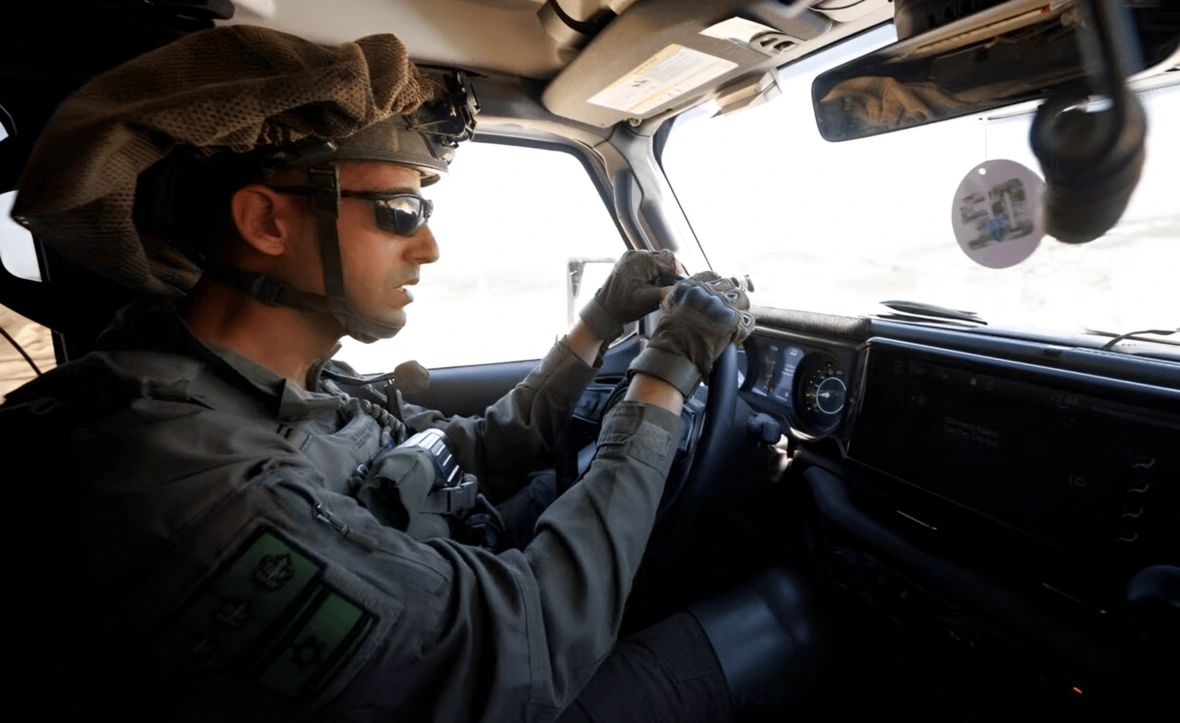Friday Features – August 1, 2025
Amid the storms of anti-Semitic blood libels, fueled by feckless Western leaders, there are some bright spots: Both the United States and the entire Arab League maintain that the fastest way to end the Gaza crisis is for Hamas to surrender and release the hostages. Visit JewishNewsWire.com 24/7 to catch-up and keep-up.
Beyond the headlines, there are many fascinating, in-depth stories you may have missed. Let’s take a look at three.
1. The View from the Frontlines in the North: A Rare & Candid Interview with an Active-Duty Brigade Commander
Source: Yedioth Ahronoth, by Yair Kraus
We hear plenty from politicians. Too much, in fact. Occasionally, we hear from Generals and their spokespersons. That’s all fine. But very rarely do we have access to a boots-on-the-ground commander.
“We’re not going backward … We cannot afford to pause … We should create a collective memory within Hezbollah which would lead them to relinquish the very idea of eliminating the State of Israel.”
Meet 38-year-old Col. Avi Marciano, married to Dovrat and father of four. He’s outgoing commander of the IDF’s Hiram Brigade, responsible for the eastern sector of the Lebanon border. He has a lot to say in this straightforward, no-holds-barred interview.

- A change in tactics: Since the November 2024 ceasefire, the IDF has shifted from “attack” to “hunt and pursuit,” striking over 500 targets. “My main mission is to move from house to house, from warehouse to warehouse, to clear and destroy, to make sure they can no longer have the ability to return here.” The guiding principle for his troops is clear and uncompromising, almost obsessive: “If you go into a place, don’t leave until it’s completely destroyed.”
- Shoot first – ask questions later: “Before the war, to fire a single shot at a Hezbollah operative’s leg, you had to get the Chief of Staff’s approval. Today, if a squad commander, or a soldier, feels that something is wrong, they have full backing to shoot. The commander on the ground knows best when someone appears threatening, looks suspicious and is somewhere he shouldn’t be.”
- The Colonel’s museum – Wait, a museum? Yes. And it has a purpose. It holds a small fraction of the weapons and equipment seized from Hezbollah after the ceasefire; a warning sign from 21 months of war and years of strategic restraint that preceded it. According to Marciano, Hezbollah stockpiled these weapons not only to invade the Galilee, but with the intent to remain there. “I want commanders and soldiers to see with their own eyes the threat we faced, and what the enemy is capable of.”
- “Al-Quds, 173 kilometers”: Marciano points to a large Lebanese road sign taken from one of the villages his brigade cleared. “This means Jerusalem. That was their long-term goal, not just Metula or Kiryat Shmona.”
- Why are there still houses standing in the buffer zone? “Unfortunately, there are still homes we didn’t fully demolish. They were all under Hezbollah’s control. They used those buildings to store weapons, as firing positions. and as launching points. Sadly, we did not have enough explosives to bring everything down.”
- Critique: “If I could, I would have created a wider buffer between the Israeli and Lebanese communities. I think we’re being far too merciful toward the enemy. These people across the border planned to slaughter us, rape our women. and burn our children.”
- A change in attitude: “We’re done being just behind the wall. In the Arab world, when you walk on your enemy’s land, it’s very different from just flying a drone above it. We will not let them reestablish themselves here like before. That won’t happen. Any ATV driving up on the ridge, I’ll fire at it. Why? Because there will be no more ATVs filming us.”
- Looking to the future: “Our current challenge is to ensure that a young Lebanese who joins Hezbollah is eliminated on the very day he signs his enlistment papers. And if that isn’t enough, I hope we will go in and secure the area by force. If the Lebanese army won’t dismantle Hezbollah, then we’ll go in and do it ourselves.”
Read the full story. There’s a lot more.
2. Jews in (Outer) Space
“When we want to see the greatness of the Creator, we lift up our eyes to the heavens, as the verse goes, ‘Raise your eyes heavenward and you will see: Who created these?!’” So said the great Lubavitcher Rebbe, Menachem Mendel Schneerson, after the moon landings.
But is it against Torah to explore space? Not at all, said The Rebbe: “Because to sit here in this world and say there is no life elsewhere is to put a limit around what G‑d can do. And nobody can do that!”
In that spirit, here are four recent developments in Jewish space exploration.

- An Israeli spacecraft to search for life on Europa: In a giant leap for Israeli space science and ambition, the Weizmann Institute of Science and Israel Aerospace Industries are developing the “Eureka Project” to search for signs of life on Jupiter’s icy moon. It will send a small, purpose-built spacecraft equipped with a single instrument to remotely detect amino acids on Europa’s surface – potential biosignatures. “We can’t compete with the scale and budgets of the major space agencies,” said Prof. Yohai Kaspi of Weizmann. “But a focused mission with a single instrument is something we can pull off.” According to “Andrey,” an IAI engineer: “Our goal is to lay the first building block toward a mission that will find direct evidence of life.” Read the full story, in Yedioth Ahronoth.
- Israel’s most technologically advanced satellite: On July 13, 2025, Israel launched its Dror‑1 communications satellite aboard a SpaceX Falcon 9 rocket from Cape Canaveral. The platform supports secure data transmission for civilian and defense users, and includes 70 onboard cameras. It inaugurates a planned Dror series, with 10 domestic communications satellites to be launched every five years, to ensure long-term strategic capability. A parallel initiative under defense auspices envisions development of nanosatellite constellations, to operate in coordinated swarms, for intelligence and surveillance. Read the full story, in Jewish News Syndicate.
- A star meets a black hole – and survives: Israeli scientists at Tel Aviv University have challenged foundational astrophysical thinking by documenting the first confirmed case of a star surviving a close encounter with a supermassive black hole – and returning for a second near-identical flare about two years later. The discovery forces astronomers to reconsider how these brilliant flares should be interpreted: not always as a star’s death knell but potentially as the early stages of a multi-stage process – and offering new insight into long-term black hole feeding behavior, stellar resilience, and the complex life cycles of galaxies. Read the full story, in Times of Israel.
- How a trailblazing Jewish scientist is still revolutionizing the world of astronomy: The late Philadelphia-born astronomer Vera Rubin changed the way we think about how galaxies move after her discovery of dark matter. To honor her, the world’s largest digital camera has been named the Vera C. Rubin Observatory. As the observatory begins delivering first-of-their-kind panoramic images of the cosmos – tracking billions of celestial objects over time – it operates on the foundation Rubin built by uncovering the unseen forces shaping galaxies. Read the full story, in Forward.
3. Secret Diaries Reveal Ben Gurion’s Sleepless Nights
Source: Jerusalem Post, by Zvika Klein
Even great leaders are human. What sets them apart is the strength and courage to overcome human frailties. And so it was with the father of modern Israel. David Ben-Gurion wrestled for decades with sleepless nights, suffocating anxiety, and the crushing weight of statecraft, according to diaries, letters, and oral testimonies freshly unveiled by the Ben-Gurion Archive.

- Insomniac: Only on September 3, 1954 did Ben Gurion record an exceptional victory: “Last night I slept more than six straight hours – for the first time in over fifteen years.” A letter back in 1937 set the tone: “For more than a week I have not slept a single night,” Ben-Gurion wrote to friends, lamenting that he had “not a moment’s rest, by day or almost by night.”
- Anxiety: Ben-Gurion frequently used the term “harada” (anxiety) to describe the dread he felt for the Zionist project and the lives placed in his care. In 1946, he told delegates to the Zionist Congress that sending new kibbutzim to the Negev left him “deeply anxious” because he had “become responsible for their lives.” The pressure sometimes exacted a physical toll: cabinet discussions during the 1956 Sinai campaign were held at his bedside while he ran a high fever.
- Finding strength in exercise and Torah study: In 1960, the daily Davar quoted him saying that two hours in a weekly Bible circle “eased the gravest worries” of leadership. Movement therapist Moshe Feldenkrais (who stood Ben-Gurion on his head; see the iconic photo above) recalled being summoned to the prime minister’s Jerusalem home in November 1957. After a breathing session that calmed him, Ben-Gurion phoned President Eisenhower to confirm Israel’s withdrawal from Sharm el-Sheikh.
- Lessons for leaders: “These papers inspire and humble at the same time,” said Eitan Dunitz, director-general of the Ben-Gurion Heritage Institute. “We see the leader and the man – awake at night under the crushing burden of responsibility, yet actively searching for ways to cope. Leadership is not only decision-making; it is a personal journey through worry and doubt. In today’s complex reality, his struggle reminds us that a people’s strength is tested precisely when it is hardest to close our eyes.”
